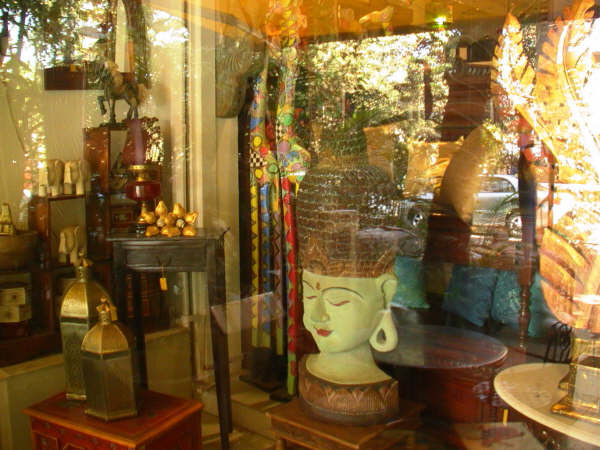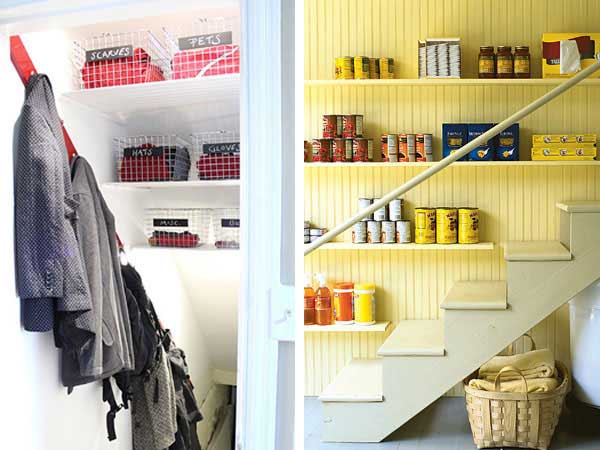While synthetic carpets have a lot of practical advantages, you cant beat the beauty of the natural carpets. They are something else altogether. Woollen and silk carpets have been used to embellish home interiors from ages. There are many other natural fibers that are used in carpet making. Lets see what are these and how do they fare in day-to-day use. Fibers are the first thing you should look into when you decide to go in for a carpet. Other considerations can come later. In this articleWoolSilkJuteCoirSisalSea grass Wool Pashmina wool of Kashmir, New Zealand wool and Tibetan wool are worlds most popular wools and are used in making exclusive woolen carpets. Wool is durable and warm fiber. It is tough and can take a beating without loosing its originality. High traffic situations do not harm its resilience. Wool fibers are naturally elastic, when crushed or stretched they bounce back to their original shape. Woollen carpets can enhance the elegance of a living room. Wool fibers have microscopic scales that capture and hold dust particles until they are vacuumed. This results in less dust in the air, a boon for people who suffer from dust allergy. However, wool does stain more easily than synthetic carpets. Wool can catch fire easily and they are also expensive. A woollen carpet is not a good choice in humid areas because it tends to hold moisture. The mountainous regions of India, from Ladakh in Jammu & Kashmir through Darjeeling in West Bengal and Sikkim to Manipur, carpets are made of pure wool in glowing colours. Patterns are Buddhist iconography, the Dhwaja (flag), kalash (water-vessel) and twin fish being favourites. Persian woollen carpets of Agra and Jaipur are also very famous. Silk Silk is the most expensive fiber. Silk comes from the cocoons of silk worms and was first used in China. Today, China still produces the best silk carpets in the world. Silk carpets are very light and smooth; they look rich. It is rarely used in wall-to-wall flooring, as it requires special care. Even when used as flooring they are used only in light traffic areas. Exquisite silk carpets enhance the decor greatly, whether spread on floors or hung on the walls. A unique property of silk is that it looks different in different sources of light and changes hue depending on the angle of view. That gives them a special, almost ethereal appeal. Usually, Buddhist and Taoist symbols such as the swastika, the yin and yang motif as well as other religious imagery are used in Chinese silk carpets. Other popular designs include lotus flowers, clouds and a variety of real and mythical animals such as dragons, elephants, horses and the phoenix. The town of Kayseri, situated in central Turkey, is very famous for its silk carpets. The Kayseri carpets are available in bright colours and in attractive designs. Kashmirs silk carpets are a continuation of the Persian tradition, which mainly include floral patterns. Jute Jute is the softest among the plant fibers. It comes in natural colours ranging from creamy whites to browns. It can be dyed or bleached to get other colours. Jute carpets are very economical. Although jute makes an excellent base for inexpensive hand-woven Persian kilim (rugs), they are not durable. Jute is prone to staining. It is advisable to use jute for low and medium traffic rooms like bedrooms and guest rooms. Jute should not be used on stairs because the surface becomes slippery with wear. Jute is particularly sensitive to direct sunlight; while exposure to sunlight speeds up deterioration of any plant fiber, in jute this process is hastened. West Bengal in India and Bangladesh are pioneers in jute carpets. Coir Kerala in India and Sri Lanka are famous for their coir carpets. Coir is made up of coconut husks and is a very strong fiber. It is very coarse; the fibers are not tightly woven and can be pulled apart very easily, so it is unsuitable for wall-to-wall carpeting. It is also not advisable to walk bare foot on coir. Coir carpets may be low on utility but are of exclusive decorative value. They make good doormats and rugs as they dry quickly. The natural colour of coir is golden brown to reddish brown, but it can be dyed. Sisal Sisal comes from a spiky indoor plant called sisal bush. Sisal plant mainly grows in Brazil and East Africa. European Sisal carpets are very popular. It is semi-soft in texture and has intricate patterns and dense weaves. It is very durable. Sisal is a good option for wall-to-wall carpeting. It is most popular natural fiber and gives very natural look to the room. Sisal should be used indoors in areas where there is not much humidity because the fibers tend to absorb moisture. You have to be careful about spills, as even water can bring about an ungainly brown stain if it is not dried immediately. To avoid stains, select a dark weave for high-traffic areas. Sisal should not be used on stairs as it becomes slippery with time. Sea grass Sea grass is grown in Chinas paddy fields. Sea grass carpets have a smooth underfoot and are remains neatly weaved. Sea grass is the best alternative available in natural fibers for making carpets. Sea grass is durable and water-resistant. It is used in its natural color, which ranges from greenish-tan to light brown to green-brown. The heavy texturing and color variation combined with the natural water-resistance of sea grass fibers make the carpets ideal for areas exposed to lot of dirt and spills. The fibers repel water naturally, so the carpets are a good choice for people who want stain-resistant carpets. You have a wide choice of eco-friendly materials for carpets. Go ahead and make your pick.
While synthetic carpets have a lot of practical advantages, you can't beat the beauty of the 'natural' carpets. They are something else altogether. Woollen and silk carpets have been used to embellish home interiors from ages. There are many other natural fibers that are used in carpet making. Let's see what are these and how do they fare in day-to-day use. Fibers are the first thing you should look into when you decide to go in for a carpet. Other considerations can come later.
Wool

Pashmina wool of Kashmir, New Zealand wool and Tibetan wool are worlds most popular wools and are used in making exclusive woolen carpets. Wool is durable and warm fiber. It is tough and can take a beating without loosing its originality. High traffic situations do not harm its resilience. Wool fibers are naturally elastic, when crushed or stretched they bounce back to their original shape. Woollen carpets can enhance the elegance of a living room. Wool fibers have microscopic scales that capture and hold dust particles until they are vacuumed. This results in less dust in the air, a boon for people who suffer from dust allergy. However, wool does stain more easily than synthetic carpets.
Wool can catch fire easily and they are also expensive. A woollen carpet is not a good choice in humid areas because it tends to hold moisture. The mountainous regions of India, from Ladakh in Jammu & Kashmir through Darjeeling in West Bengal and Sikkim to Manipur, carpets are made of pure wool in glowing colours. Patterns are Buddhist iconography, the Dhwaja (flag), kalash (water-vessel) and twin fish being favourites. Persian woollen carpets of Agra and Jaipur are also very famous.
Silk

Silk is the most expensive fiber. Silk comes from the cocoons of silk worms and was first used in China. Today, China still produces the best silk carpets in the world. Silk carpets are very light and smooth; they look rich. It is rarely used in wall-to-wall flooring, as it requires special care. Even when used as flooring they are used only in light traffic areas. Exquisite silk carpets enhance the decor greatly, whether spread on floors or hung on the walls. A unique property of silk is that it looks different in different sources of light and changes hue depending on the angle of view. That gives them a special, almost ethereal appeal.
Usually, Buddhist and Taoist symbols such as the swastika, the yin and yang motif as well as other religious imagery are used in Chinese silk carpets. Other popular designs include lotus flowers, clouds and a variety of real and mythical animals such as dragons, elephants, horses and the phoenix.
The town of Kayseri, situated in central Turkey, is very famous for its silk carpets. The Kayseri carpets are available in bright colours and in attractive designs. Kashmir's silk carpets are a continuation of the Persian tradition, which mainly include floral patterns.
Jute
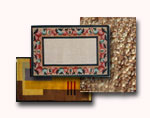
Jute is the softest among the plant fibers. It comes in natural colours ranging from creamy whites to browns. It can be dyed or bleached to get other colours. Jute carpets are very economical. Although jute makes an excellent base for inexpensive hand-woven Persian kilim (rugs), they are not durable. Jute is prone to staining. It is advisable to use jute for low and medium traffic rooms like bedrooms and guest rooms. Jute should not be used on stairs because the surface becomes slippery with wear.
Jute is particularly sensitive to direct sunlight; while exposure to sunlight speeds up deterioration of any plant fiber, in jute this process is hastened. West Bengal in India and Bangladesh are pioneers in jute carpets.
Coir
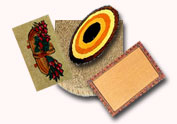
Kerala in India and Sri Lanka are famous for their coir carpets. Coir is made up of coconut husks and is a very strong fiber. It is very coarse; the fibers are not tightly woven and can be pulled apart very easily, so it is unsuitable for wall-to-wall carpeting. It is also not advisable to walk bare foot on coir. Coir carpets may be low on utility but are of exclusive decorative value. They make good doormats and rugs as they dry quickly. The natural colour of coir is golden brown to reddish brown, but it can be dyed.
Sisal
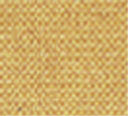
Sisal comes from a spiky indoor plant called sisal bush. Sisal plant mainly grows in Brazil and East Africa. European Sisal carpets are very popular. It is semi-soft in texture and has intricate patterns and dense weaves. It is very durable. Sisal is a good option for wall-to-wall carpeting. It is most popular natural fiber and gives very natural look to the room. Sisal should be used indoors in areas where there is not much humidity because the fibers tend to absorb moisture. You have to be careful about spills, as even water can bring about an ungainly brown stain if it is not dried immediately. To avoid stains, select a dark weave for high-traffic areas. Sisal should not be used on stairs as it becomes slippery with time.
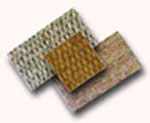
Sea grass
Sea grass is grown in China's paddy fields. Sea grass carpets have a smooth underfoot and are remains neatly weaved. Sea grass is the best alternative available in natural fibers for making carpets. Sea grass is durable and water-resistant. It is used in its natural color, which ranges from greenish-tan to light brown to green-brown. The heavy texturing and color variation combined with the natural water-resistance of sea grass fibers make the carpets ideal for areas exposed to lot of dirt and spills. The fibers repel water naturally, so the carpets are a good choice for people who want stain-resistant carpets. You have a wide choice of eco-friendly materials for carpets. Go ahead and make your pick.























